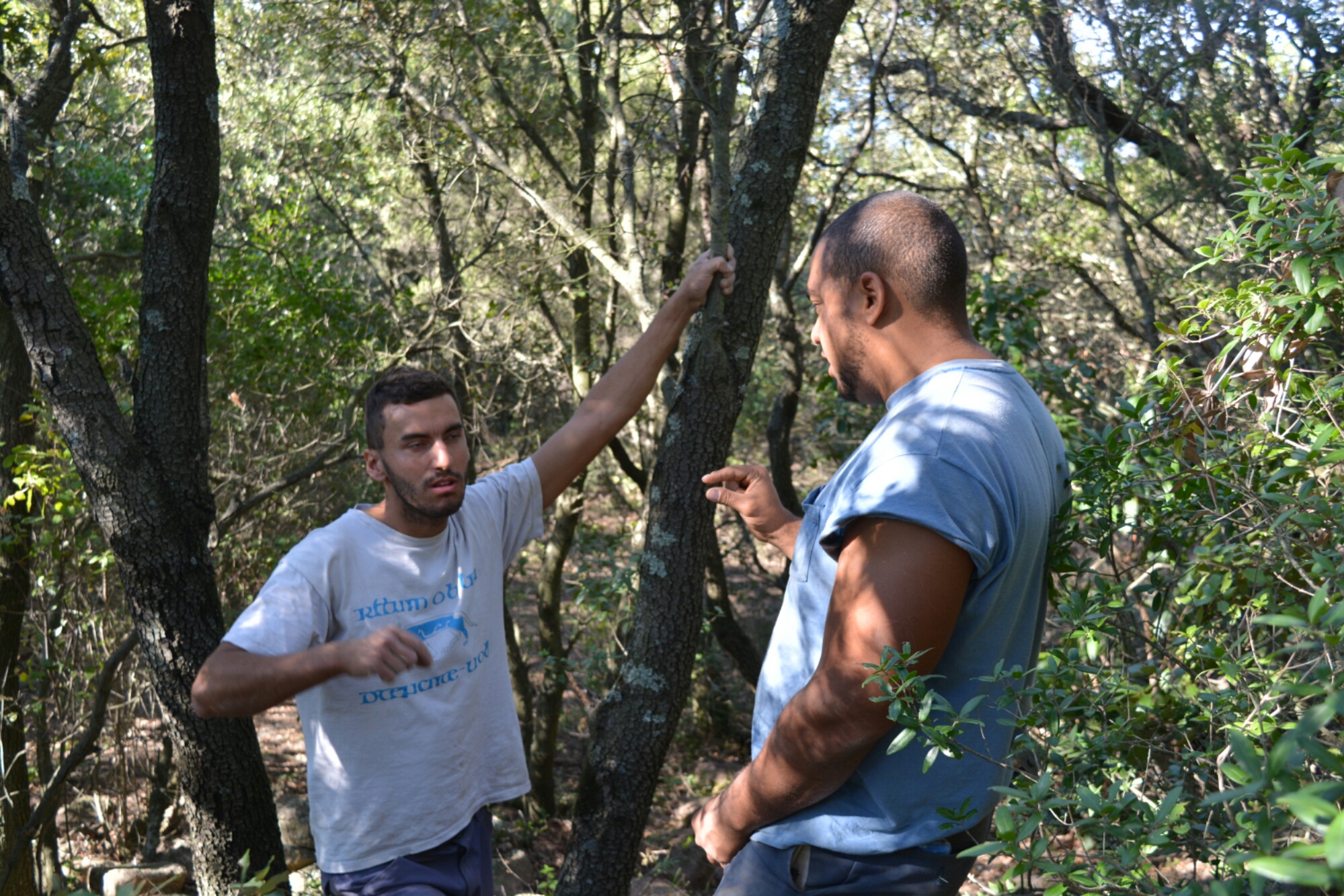Well, my field season is officially over (Cue “This is the End” by The Doors).

Friday was my last day digging at Sainte-Candie. A tiny part of me is saying Hallelujah; the other, larger part is a bit melancholy about leaving the field. I’m feeling the same nervousness I had when I was leaving Aeclanum and the Apolline Project. It’s been a long, hard road with all sorts of frustrations, but it’s also had its celebrations; lessons taught and lessons learned; new contexts; new students; unique artifacts; and dirt…lots of dirt. To explain, I think summarizing the past couple weeks’ work is worthwhile:
We’ve spent the past week and a half working through the complex stratigraphy I’ve mentioned in several of my previous posts. By the final week in Zone 16, I’d come to peace with our several visible layers and their complex, irregular relationships with one another. This led to a streamlining of procedure making our team handle the situation in a slightly more calm manner.

The result was the opening, recording, and excavation of 8 contexts since my last post. It couldn’t have been done without the great cooperation, brainpower, and hard work of my teammates Iza and Emma. They were patient with me through my breakdowns screaming at the mountain and me constantly changing my mind about our stratigraphic situation. I’m proud of them for taking the light speed information I was dumping on them and executing the tasks at hand with cool heads and competent troweling.

All told in my trench, over a month and a half we excavated 42 separate contexts. Many were features like postholes, indicative of building techniques utilizing materials like wood and packed earth (a marked digression from earlier brick and mortar construction). The others were the dreaded contexts with complex relationships. While their discreet chronological sequence and may be difficult to determine, their complex relationships suggest a back and forth between the people (re)inhabiting the locality and natural forces changing the landscape. We found hundreds of pieces of pottery. Some was made locally, some was from nearby in Italy, and some came all the way from North Africa. Let’s not forget the several shards of glass from Egypt, Syria, and the Middle East. Beyond these, we recovered and recorded 22 special finds. Many of these were fragments of stone tools and projectiles or the flakes discarded while making them. When juxtaposed with the imported materials, they stand as a symbol of people making do during a time of strain on resource availability and the skills to work them while other places continued to flourish in a Post-Roman world.
All of that work and material in Zone 16 leaves me with these final interpretive thoughts about the trench: the area represents multiple phases of habitation, abandonment, and rehabitation. The finds indicate that during these periods, the people living there had a modicum of connectedness to the rest of the Mediterranean world despite more immediate sociopolitical challenges to a stable living. The complexity of the stratigraphy tells us exactly what you’d expect about the challenges of living on the side of a mountain; erosion created a constant struggle for residents and newcomers who answered with repeated attempts at altering the landscape to suit their needs. Ultimately, we can picture a hard life lived at Sainte-Candie by early medieval people who, despite their difficult situation, worked to retain some of the skills, customs, and standards of the previous period, while also defining the era to come with new responses to new challenges.






So what now?
I’ll be returning home in roughly a week’s time after a short stay with a cousin in Reims and maybe a night or two in Paris. By the time I get back to Baltimore it will be my mother’s birthday and I’ll be fighting the jetlag to stay awake for a celebratory dinner. After, it’ll be on to a new daily grind. Hitting the gym; reading for research and extra learning; applying for jobs. My goals haven’t changed: I’m still in the hunt for a PhD program where I can take the next step in becoming an academic classical archaeologist. I may have a lead on a program and I’ve still got a plan if I’m unsuccessful again this application cycle. Overall, I’ll be just fine.
But what do I take away from a long season, (my first, no less as a fully-fledged field supervisor at not one, but two projects)?
I think a big thing for me is the discovery and constant personal revelation of the teaching tradition that comes from archaeological fieldwork. I’ve had the privilege of teaching the methods and theory of Archaeology and fieldwork to dozens of students these past few months. It’s tiring, but I genuinely like it.
I’ve also been challenged to be more patient: patient with my students; patient with my directors; patient with my stratigraphy. Heavens know I’ve had my failings but I think in previous seasons as a field student or volunteer I had the ability to wash my hands of the burdens of each day; now as a supervisor, those burdens became my daily responsibilities.
Lastly and perhaps most importantly, I must admit that I’ve finally learned how to do field archaeology right. Yes, sure, I’ve been on several projects before over a number of seasons and I’ve earned two degrees qualifying me as an Archaeologist. Nevertheless, this season has challenged me to come into my own as a professional in the field, responsible for delivering important data and knowledge to students and researchers gathered and delivered with precise methods.
I can comfortably say as the season comes to a close, I think I’ve succeeded.

Leave a comment